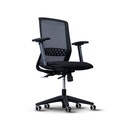Amidst a shifting regulatory and operational landscape, many Irish organisations continue to misjudge the strategic relevance of Display Screen Equipment (DSE) compliance. It is not that they are unaware of the legislation. It is that they are applying an outdated model to a profoundly altered world of work, and assuming their static approach is enough.
It is not.
Recent data suggests that 67% of Irish organisations remain exposed to vulnerabilities in how they manage DSE compliance. Not because of inaction, but because of legacy thinking.
We Are Not Working the Way We Were
Since 2020, the structure of work in Ireland has shifted more radically than in any previous decade. Hybrid and remote arrangements, once exceptions, are now operational norms. Yet many health and safety policies, particularly those concerning DSE compliance, have failed to evolve beyond the assumption of fixed workstations, singular office locations, and centralised oversight.
This is more than an administrative blind spot; it is a structural risk.
According to the Health and Safety Authority (HSA) 2024 Annual Report, over 11,600 workplace inspections were conducted, with increased scrutiny on sectors previously considered low-risk. While workplace fatalities reached a historic low (33 in 2024), the most persistent causes of non-fatal injury remain rooted in ergonomics, with manual handling and musculoskeletal strain once again at the top. (HSA Annual Report 2024)
The data makes one thing clear. While headline hazards are being actively managed, chronic ergonomic exposure from improper DSE setups is quietly driving long-term cost through absenteeism, claims, and reputational damage.
Compliance Is Being Misunderstood
What is emerging across health and safety forums is a consistent narrative: compliance is too often being interpreted as a one-time event, not a continuous function. Many businesses still rely on static self-assessment tools, generic training materials, and passive document storage. In doing so, they are effectively preserving a 2015 model in a 2025 environment.
The legislation has not stood still. Neither has the workforce.
According to IOSH Ireland Branch research (2024), a significant proportion of companies are struggling to demonstrate real-time compliance across distributed teams. Audits are revealing gaps not just in assessment frequency, but in how organisations track, evidence, and act on DSE-related risk in a hybrid context. More concerning is the fact that very few employers can produce dynamic records showing who was assessed, where, when, and under what conditions. In the event of an incident, that absence of traceability becomes not only a compliance failure, but a legal liability.
The Strategic Oversight No One Wants to Own
The issue is no longer ignorance. It is inertia.
Display screen equipment policies are rarely discussed at board level. It is delegated, often to overstretched health and safety leads without the systems, tools or mandate to challenge outdated models. Yet the risk exposure DSE compliance represents, if unaddressed, can damage workforce trust, impact productivity, and trigger litigation.
A mature organisation should be asking:
- Can we map our ergonomic risk across office-based, hybrid and remote workers?
- Are our training materials relevant to how people actually work in 2025?
- Could we pass an unannounced audit tomorrow, with evidence, not assumptions?
- And if a claim were submitted today, would our documentation hold up under scrutiny?
For many, at least one of these answers is still “no.”
Why DSE Compliance Now Belongs in Risk, Not Just Health & Safety
There is a growing view supported by policy groups and EU regulatory direction, that DSE compliance must be repositioned as a strategic risk function. It is no longer just a workplace safety issue. It is a governance issue, a workforce wellbeing issue, and in some cases, a legal exposure issue.
The most progressive organisations are already treating ergonomic data as part of their operational risk portfolio. They are integrating DSE compliance with their ESG reporting, absenteeism tracking, and even workforce retention strategies. Why? Because improper DSE management does not just lead to injury. It leads to fatigue, disengagement, and performance degradation, all of which impact the bottom line.
This shift is not about spending more. It is about managing smarter.
It is possible to build DSE compliance into a dynamic system, one that flexes as the workforce evolves and strengthens both legal resilience and organisational credibility. But that change will not happen until compliance moves from the back-office binder to the boardroom agenda.
This Is Not a Drill. It Is a Lagging Indicator
By the time Display Screen Equipment compliance issues reach the board, usually via a claim, an audit, or a regulator’s letter, the problem is already live.
Organisations must stop asking, “Are we compliant?” and start asking:
“Can we prove it?”
“Can we sustain it?”
“Can we improve it?”
That shift, from static documents to active governance, is what separates businesses reacting to risk from those shaping their operational future.
Display Screen Equipment compliance is not a policy. It is a posture.
And in 2025, posture, in every sense, matters more than ever.















